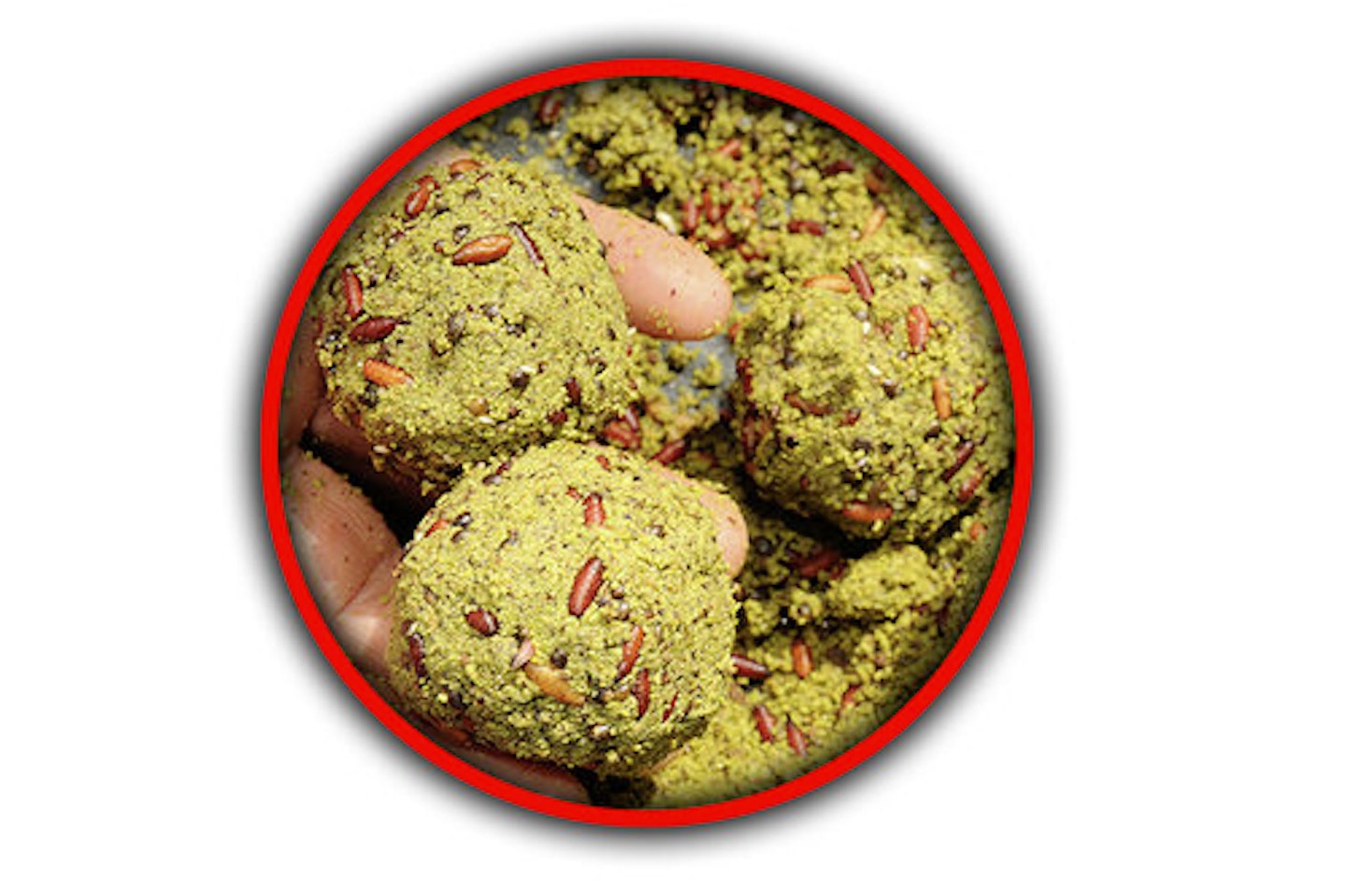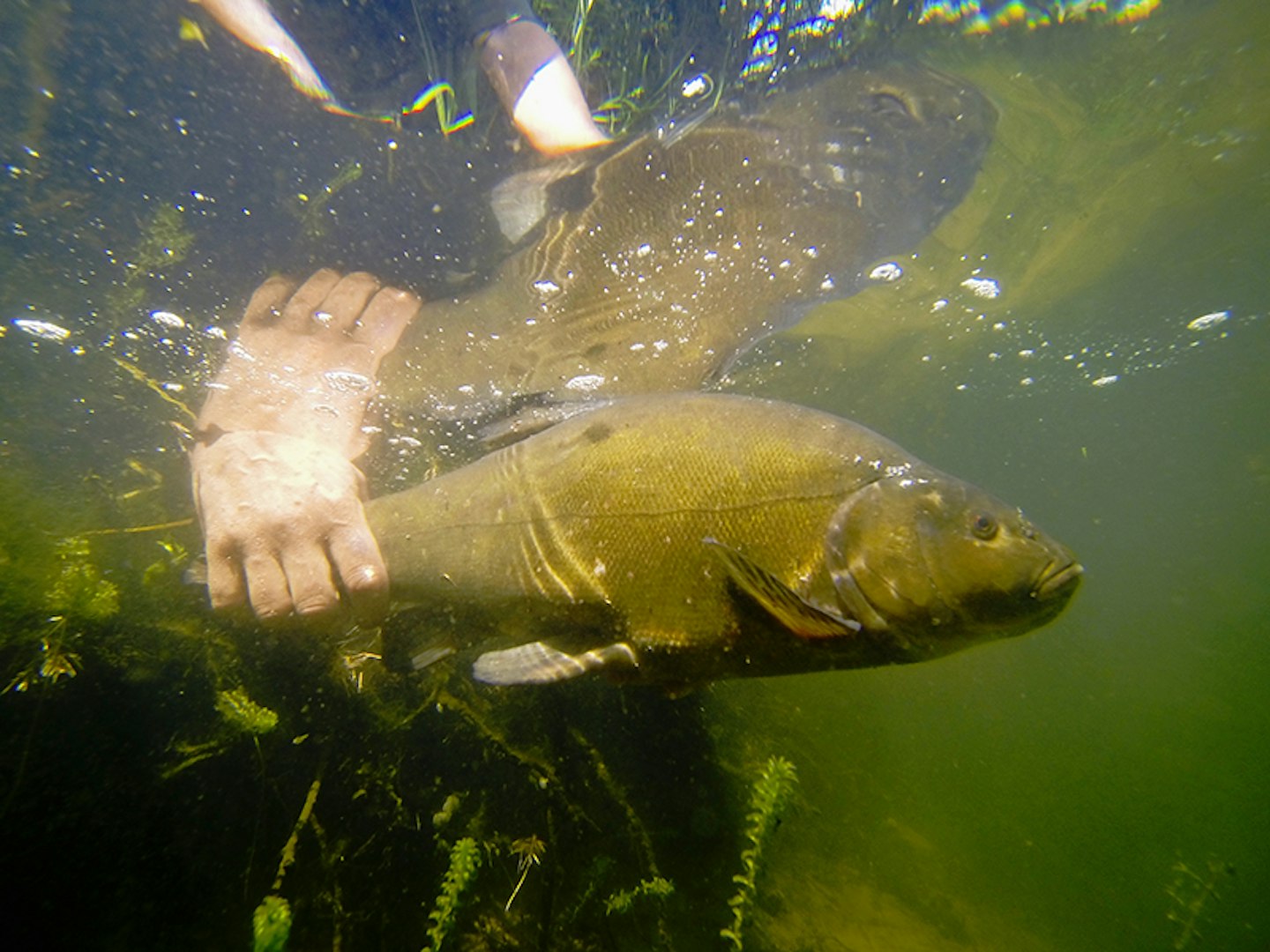Dai Gribble celebrates the best way to catch tench this spring by sharing his favourite way of catching them
Welcome to the glorious world of tenching on the float, where the angler can be taken on a roller-coaster ride from peaceful reflection to high-octane action in seconds.
One man who simply loves waggler fishing for tench is Korum’s Dai Gribble, a former Drennan Cup champion. We met up with the 49-year-old Staffordshire all-rounder to find out why those anglers who shun floatfishing for tench are missing out.
SIMPLICITY THE KEY
Unlike Dai’s feeder fishing tactics, which dictate the need for specialist rods, floatfishing for tench can be undertaken with a standard commercial float set-up. Any decent float rod combined with a quality 6lb mainline is ideal. This will generally be fished straight through to a size 10-18 hook, depending on the hookbait.

“Gravel pit tench are very simple creatures, so there is no need to tie ludicrously complicated float set-ups with wildly intricate shotting patterns. I think that the ideal mixture is a balance of strength and sensitivity,” said Dai.
This deliberately simple approach extends to Dai’s choice of float – either a straight peacock waggler, or, if the day is very windy, a long-bristled Driftbeater. “Tench anglers collect floats like specimen carpers collect pop-ups,” Dai added, with a chuckle.
“I have loads of floats that I have never, ever used, but that still doesn’t stop me buying more… just in case they might come in!” On the day, Dai’s chosen tool was a 2g Preston Innovations Dura Wag.
The beauty of these floats is that they are modular, allowing you to change tops if required as well as change the loading from maximum to very little by removing the brass weights at the base of the float.
Dai’s float rig was set to fish 1ins overdepth, with just two No4 shot and one No6 down the line. If the wind or tow increased, he could move the float up the line and ‘lay on’ by up to 12ins with the dropper shot being laid on the lakebed to help anchor the rig.
A SPREAD OF BAITS

Float tactics encourage you to chop and change your hookbaits much more than you would otherwise do when using legering techniques to target tench.
“On the feeder, I use red maggots most of the time – in both the feeder itself and on the hook – because I am only recasting every hour or two. They are a bait that I have the utmost confidence in when gravel pit fishing for tench,” explained Dai.
“With floatfishing, I’m recasting every 10 or 20 minutes, so this means I’m more inclined to give a kernel of sweetcorn or a soft hooker pellet a go for that period.”
Dai likes to fish his baits in rotation on the float and often takes quite a selection to try out on the day. Predictably, red maggots still play a big part in his approach, but they are often backed up by other tempting morsels such as casters, worms, hooker pellets, sweetcorn, hemp and bread.
“Tench can be very finicky feeders. Some days they’ll come freely to any hookbait, while on others they will not touch maggots and casters but will hang themselves every cast or put-in on, say, a grain of corn. Having a range of change baits enables you to go through this selection process.
“The fish will often give away their presence by sending up bubbles or knocking the float when you’re fishing close in. This means you can feed very accurately and judge how much to introduce against the number of bites and amount of activity in the swim.”
SWEETLY DOES IT
Once the swim has been raked and fed – usually with a handful of red maggots – and the tackle set-up, Dai will kickstart his session on particle baits such as maggots, casters, hemp and sweetcorn.
If there are lots of small rudd and other silverfish in the water, Dai will ball-in snooker ball-sized balls of groundbait containing particles to create a carpet of food and ensure some of the hookbait gets to the lakebed intact.
“Around five or six balls is perfect to start with. I use a mixture of fishmeal crumb, combined with molasses to create a sweet mix,” explained Dai.
He will then top up the swim little-and-often, so there’s always food in the swim – but not so much that it overfeeds the tench or, indeed, too little so they clear the swim and move on. “It’ll be a small ball every 15 minutes or a pouchful of particles, depending upon the action,” explained Dai.
With the sun rising steadily, it wasn’t long before Dai’s tactics paid dividends. His neon-orange float tip wobbled briefly, before burying. He duly swept the rod back and hooked into the fish. Sliding the 5lb male tench into the folds of his net, the look on his face said it all.

